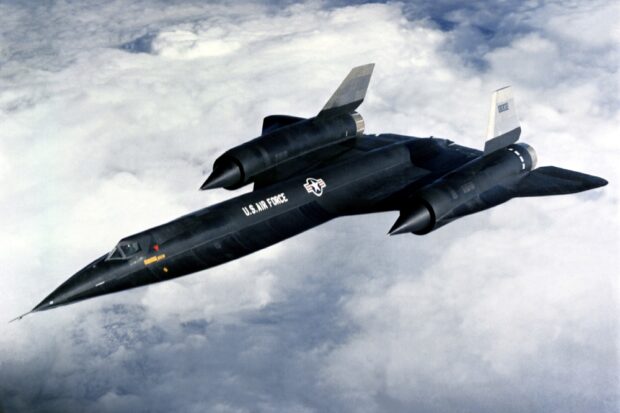The Lockheed A-12 is a retired high-altitude, Mach 3+ reconnaissance aircraft built for the United States Central Intelligence Agency (CIA) by Lockheed’s Skunk Works, based on the designs of Clarence “Kelly” Johnson.
The aircraft was designated A-12, the 12th in a series of internal design efforts for “Archangel”, the aircraft’s internal code name. In 1959, it was selected over Convair’s FISH and Kingfish designs as the winner of Project GUSTO, and was developed and operated under Project Oxcart.
The CIA’s representatives initially favoured Convair’s design for its smaller radar cross-section, but the A-12’s specifications were slightly better and its projected cost was much lower. The companies’ respective track records proved decisive. Convair’s work on the B-58 had been plagued with delays and cost overruns, whereas Lockheed had produced the U-2 on time and under budget. In addition, Lockheed had experience running a “black” project.
The A-12 was produced from 1962 to 1964 and flew from 1963 to 1968. It was the precursor to the twin-seat U.S. Air Force YF-12 prototype interceptor, M-21 launcher for the D-21 drone, and the SR-71 Blackbird, a slightly longer variant able to carry a heavier fuel and camera load. The A-12 began flying missions in 1967 and its final mission was in May 1968; the program and aircraft were retired in June. The program was officially revealed in the mid-1990s.
A CIA officer later wrote,
“Oxcart was selected from a random list of codenames to designate this R&D and all later work on the A-12. The aircraft itself came to be called that as well.”
The crews named the A-12 the Cygnus, suggested by pilot Jack Weeks to follow the Lockheed practice of naming aircraft after celestial bodies.
With the failure of the CIA’s Project Rainbow to reduce the radar cross-section (RCS) of the U-2, preliminary work began inside Lockheed in late 1957 to develop a follow-on aircraft to overfly the Soviet Union. Designer Kelly Johnson said,
“In April 1958 I recall having long discussions with [CIA Deputy Director for Plans] Richard Bissell over the subject of whether there should be a follow-on to the U-2 aircraft. We agreed … that there should be one more round before satellites would make aircraft reconnaissance obsolete for covert reconnaissance.”
Under Project Gusto the designs were nicknamed “Archangel”, after the U-2 program, which had been known as “Angel”. As the aircraft designs evolved and configuration changes occurred, the internal Lockheed designation changed from Archangel-1 to Archangel-2, and so on. These names for the evolving designs soon simply became known as “A-1”, “A-2”, etc. The CIA program to develop the follow-on aircraft to the U-2 was code-named Oxcart.
These designs had reached the A-11 stage when the program was reviewed. The A-11 was competing against a Convair proposal called Kingfish, of roughly similar performance. However, the Kingfish included a number of features that greatly reduced its RCS, which was seen as favourable to the board. Lockheed responded with a simple update of the A-11, adding twin canted fins instead of a single right-angle one, and adding a number of areas of non-metallic materials. This became the A-12 design. On 26 January 1960, the CIA ordered 12 A-12 aircraft.
Photo: An air-to-air left front view of a A-12 aircraft. Erroneously identified as Y-12 in the source, but Serial Number 06932 is a A-12 . This aircraft was lost over South China Sea on June 6, 1968
Sources: Wikipedia; YouTube

